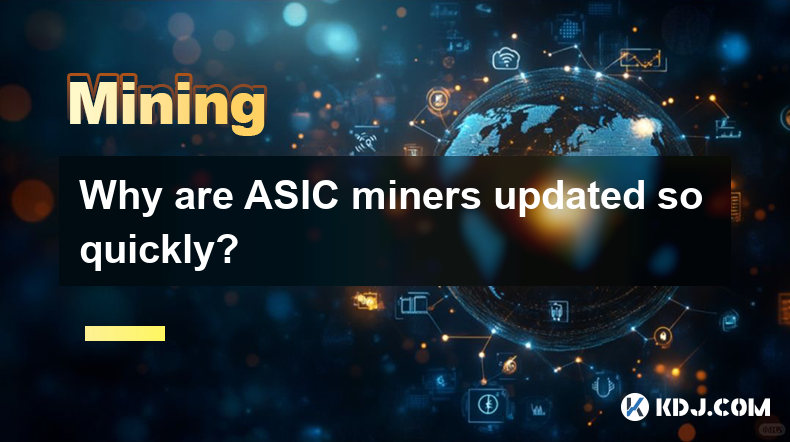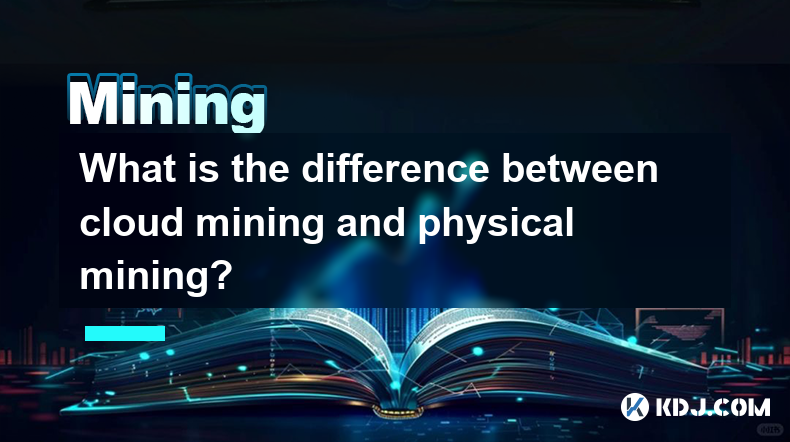-
 Bitcoin
Bitcoin $83,602.2353
-2.17% -
 Ethereum
Ethereum $1,577.6270
-3.79% -
 Tether USDt
Tether USDt $0.9999
0.02% -
 XRP
XRP $2.0682
-3.29% -
 BNB
BNB $580.5372
-1.35% -
 Solana
Solana $125.9599
-4.13% -
 USDC
USDC $0.9999
0.01% -
 TRON
TRON $0.2526
0.40% -
 Dogecoin
Dogecoin $0.1542
-3.28% -
 Cardano
Cardano $0.6077
-5.21% -
 UNUS SED LEO
UNUS SED LEO $9.3476
-0.85% -
 Chainlink
Chainlink $12.2682
-3.17% -
 Avalanche
Avalanche $18.8394
-5.46% -
 Stellar
Stellar $0.2340
-2.50% -
 Toncoin
Toncoin $2.8622
-2.26% -
 Shiba Inu
Shiba Inu $0.0...01168
-1.90% -
 Sui
Sui $2.1011
-4.06% -
 Hedera
Hedera $0.1573
-5.64% -
 Bitcoin Cash
Bitcoin Cash $322.1078
-3.54% -
 Litecoin
Litecoin $75.9738
-2.48% -
 Polkadot
Polkadot $3.5448
-3.26% -
 Dai
Dai $1.0000
0.01% -
 Bitget Token
Bitget Token $4.2295
-2.19% -
 Hyperliquid
Hyperliquid $14.9181
-7.99% -
 Ethena USDe
Ethena USDe $0.9991
0.01% -
 Pi
Pi $0.6195
-16.55% -
 Monero
Monero $218.5657
3.31% -
 Uniswap
Uniswap $5.1727
-3.85% -
 OKB
OKB $52.2344
0.01% -
 Pepe
Pepe $0.0...07065
-4.74%
How do mining equipment on digital currency mining platforms dissipate heat?
Digital currency mining platforms use air, liquid, heat pipes, phase change, thermoelectric, passive, and hybrid cooling to manage heat from mining equipment effectively.
Apr 05, 2025 at 06:35 pm

Mining digital currencies is a process that requires significant computational power, and as a result, mining equipment generates a substantial amount of heat. Efficient heat dissipation is crucial to maintain the performance and longevity of the mining hardware. Various methods are employed by mining platforms to manage this heat, ensuring that the equipment operates within safe temperature ranges. This article will explore the different techniques used to dissipate heat from mining equipment on digital currency mining platforms, providing a comprehensive understanding of the cooling solutions implemented in the industry.
Air Cooling
Air cooling is one of the most common methods used to dissipate heat from mining equipment. This method involves using fans to circulate air over the components of the mining rig, drawing heat away from the hardware. The effectiveness of air cooling depends on several factors, including the size and number of fans, the airflow design of the mining rig, and the ambient temperature of the environment.
- Case Fans: Many mining rigs are equipped with multiple case fans that work together to create a flow of air through the system. These fans can be strategically placed to maximize airflow over the hottest components, such as the GPUs or ASICs.
- Heat Sinks: Heat sinks are often used in conjunction with fans to enhance air cooling. These metal structures are attached to the hottest components and help to dissipate heat more efficiently by increasing the surface area exposed to the airflow.
- Ventilation: Proper ventilation is crucial for air cooling to be effective. Mining platforms often design their facilities with adequate ventilation to ensure that hot air can be expelled and replaced with cooler air.
Liquid Cooling
Liquid cooling is another popular method for dissipating heat from mining equipment, particularly in large-scale mining operations. This method involves using a liquid coolant to absorb heat from the mining hardware and then dissipating that heat through a radiator or heat exchanger. Liquid cooling can be more effective than air cooling, as liquids have a higher heat capacity and can transfer heat more efficiently.
- Direct Liquid Cooling: In direct liquid cooling systems, the coolant comes into direct contact with the components of the mining rig. This method can be highly effective but requires careful design to prevent leaks and ensure compatibility with the hardware.
- Indirect Liquid Cooling: Indirect liquid cooling systems use a closed loop where the coolant does not come into direct contact with the mining hardware. Instead, the coolant absorbs heat from a heat sink or cold plate attached to the components.
- Immersion Cooling: Immersion cooling involves submerging the entire mining rig in a non-conductive liquid coolant. This method can be highly effective for dissipating heat, as it allows for direct and uniform cooling of all components.
Heat Pipes
Heat pipes are another technology used to dissipate heat from mining equipment. These devices use the principles of evaporation and condensation to transfer heat from one location to another. Heat pipes are often used in conjunction with other cooling methods to enhance their effectiveness.
- Structure: A heat pipe consists of a sealed tube filled with a working fluid. When one end of the heat pipe is heated, the fluid evaporates and moves to the cooler end, where it condenses and releases the heat.
- Application: Heat pipes are commonly used to transfer heat from the hottest components of the mining rig to a location where it can be more easily dissipated, such as a heat sink or a liquid cooling system.
- Advantages: Heat pipes can be highly effective at transferring heat over long distances and can be used to cool components that are difficult to reach with other cooling methods.
Phase Change Cooling
Phase change cooling is a more advanced method of heat dissipation that involves using a refrigerant to absorb heat from the mining equipment. This method can be highly effective but is typically more complex and expensive to implement.
- Refrigerant: In phase change cooling systems, a refrigerant is used to absorb heat from the mining hardware. The refrigerant evaporates as it absorbs heat and then condenses in a separate unit, releasing the heat.
- Efficiency: Phase change cooling can be more efficient than other methods, as it can maintain lower temperatures and handle higher heat loads. This makes it suitable for high-performance mining rigs.
- Implementation: Phase change cooling systems often require specialized equipment and expertise to install and maintain. They are typically used in large-scale mining operations where the benefits of increased efficiency justify the additional cost and complexity.
Thermoelectric Cooling
Thermoelectric cooling, also known as Peltier cooling, is a method that uses the Peltier effect to transfer heat from one side of a device to the other. This method can be used to cool specific components of the mining rig, such as the GPUs or ASICs.
- Peltier Effect: The Peltier effect is a phenomenon where the application of an electric current to a junction of two different materials results in the transfer of heat from one side of the junction to the other.
- Application: Thermoelectric coolers can be attached directly to the hottest components of the mining rig, providing targeted cooling. They are often used in conjunction with other cooling methods to enhance their effectiveness.
- Limitations: Thermoelectric cooling can be less efficient than other methods and may require additional power to operate. However, it can be useful for cooling specific components that are difficult to cool with other methods.
Passive Cooling
Passive cooling methods do not require any external power source and rely on natural convection and radiation to dissipate heat. While less effective than active cooling methods, passive cooling can be used in conjunction with other methods to enhance overall cooling performance.
- Heat Sinks: Large heat sinks can be used to dissipate heat through natural convection. These heat sinks are often designed with fins to increase their surface area and improve heat dissipation.
- Radiative Cooling: Some mining rigs use radiative cooling, where heat is dissipated through infrared radiation. This method can be effective in environments where the ambient temperature is lower than the temperature of the mining hardware.
- Design Considerations: Passive cooling requires careful design to ensure that the mining rig is positioned and configured to maximize natural heat dissipation. This may include optimizing the placement of components and ensuring adequate spacing between them.
Hybrid Cooling Systems
Many mining platforms use hybrid cooling systems that combine multiple cooling methods to achieve optimal heat dissipation. These systems can be tailored to the specific needs of the mining operation, taking into account factors such as the type of hardware, the scale of the operation, and the environmental conditions.
- Combination of Methods: Hybrid cooling systems may combine air cooling, liquid cooling, heat pipes, and other methods to achieve the best possible cooling performance. For example, a system might use liquid cooling for the hottest components and air cooling for the rest of the rig.
- Customization: Hybrid cooling systems can be customized to meet the specific needs of the mining operation. This may involve adjusting the balance between different cooling methods or adding additional cooling components as needed.
- Efficiency: Hybrid cooling systems can be more efficient than single-method systems, as they can take advantage of the strengths of each cooling method. This can result in better overall performance and longer equipment lifespan.
Environmental Control
In addition to the cooling methods used directly on the mining equipment, many mining platforms also implement environmental control measures to manage heat dissipation. These measures can help to create a more favorable environment for the mining hardware, reducing the overall cooling requirements.
- Temperature Control: Mining platforms often use air conditioning or other temperature control systems to maintain a stable and cool environment for the mining equipment. This can help to reduce the heat load on the cooling systems and improve overall performance.
- Humidity Control: Controlling humidity can also be important for managing heat dissipation. High humidity can reduce the effectiveness of air cooling, so many mining platforms use dehumidifiers to maintain optimal humidity levels.
- Air Filtration: Clean air is important for effective cooling, as dust and other contaminants can reduce the efficiency of cooling systems. Many mining platforms use air filtration systems to ensure that the air circulating through the mining equipment is clean and free of contaminants.
Monitoring and Maintenance
Effective heat dissipation also requires ongoing monitoring and maintenance of the cooling systems. Mining platforms must regularly check the performance of their cooling systems and make adjustments as needed to ensure optimal operation.
- Temperature Monitoring: Mining platforms often use temperature sensors to monitor the temperature of the mining equipment and the cooling systems. This data can be used to identify any issues and make adjustments to the cooling systems as needed.
- Regular Maintenance: Regular maintenance of the cooling systems is crucial to ensure their continued effectiveness. This may include cleaning the components, replacing worn parts, and checking for any leaks or other issues.
- Upgrades and Improvements: As technology advances, mining platforms may need to upgrade or improve their cooling systems to keep up with the increasing heat loads of newer mining hardware. This can involve adding additional cooling components or replacing existing systems with more efficient ones.
Common Questions
Q: Why is heat dissipation important for mining equipment?
A: Heat dissipation is crucial for mining equipment because excessive heat can lead to reduced performance, hardware damage, and decreased lifespan of the mining rigs. Effective cooling ensures that the equipment operates within safe temperature ranges, maintaining optimal performance and longevity.
Q: What are the most common methods of heat dissipation used in mining platforms?
A: The most common methods of heat dissipation used in mining platforms include air cooling, liquid cooling, heat pipes, phase change cooling, thermoelectric cooling, passive cooling, and hybrid cooling systems. Each method has its own advantages and is often used in combination with others to achieve optimal cooling performance.
Q: How does liquid cooling compare to air cooling for mining equipment?
A: Liquid cooling can be more effective than air cooling because liquids have a higher heat capacity and can transfer heat more efficiently. However, liquid cooling systems are typically more complex and expensive to implement. Air cooling is simpler and less costly but may not be as effective for high-performance mining rigs.
Q: What are the benefits of using hybrid cooling systems in mining platforms?
A: Hybrid cooling systems combine multiple cooling methods to achieve optimal heat dissipation. The benefits include improved overall cooling performance, the ability to customize the system to meet specific needs, and the potential for increased efficiency and longer equipment lifespan.
Q: How can environmental control measures enhance heat dissipation in mining platforms?
A: Environmental control measures such as temperature control, humidity control, and air filtration can create a more favorable environment for the mining equipment. This can reduce the heat load on the cooling systems, improve overall cooling performance, and help to maintain optimal operating conditions for the mining hardware.
Disclaimer:info@kdj.com
The information provided is not trading advice. kdj.com does not assume any responsibility for any investments made based on the information provided in this article. Cryptocurrencies are highly volatile and it is highly recommended that you invest with caution after thorough research!
If you believe that the content used on this website infringes your copyright, please contact us immediately (info@kdj.com) and we will delete it promptly.
- Avalon Labs Has Launched the Institutional Yield Layer on Bybit Earn, Opening Bitcoin to DeFi
- 2025-04-16 14:25:14
- Chipmaking giants Nvidia and AMD have seen their share prices slide
- 2025-04-16 14:25:14
- ChatGPT-4.5, OpenAI's Latest Innovation, Has Reached a Decisive Milestone by Passing the Turing Test with an Impressive Success Rate of 73%
- 2025-04-16 14:20:12
- Bitcoin (BTC) Price Up 9% Over The Past Week, Targeting $90,000 Resistance
- 2025-04-16 14:20:12
- A crypto game inspired by Monopoly is reportedly on the horizon
- 2025-04-16 14:15:13
- A Stablecoin To Beat Inflation?
- 2025-04-16 14:15:13
Related knowledge

Why does mining require high computing power?
Apr 16,2025 at 12:07pm
Mining in the cryptocurrency world, particularly in the case of Bitcoin and other Proof of Work (PoW) cryptocurrencies, is a process that demands significant computational resources. This article delves into the reasons behind this high demand for computing power, exploring the technical intricacies and the underlying principles that necessitate such re...

Why are ASIC miners updated so quickly?
Apr 16,2025 at 01:07pm
The rapid updates of ASIC miners in the cryptocurrency industry are driven by several key factors that contribute to their constant evolution and improvement. ASIC miners, or Application-Specific Integrated Circuit miners, are specialized hardware designed to mine specific cryptocurrencies with high efficiency. The primary reason for their frequent upda...

How to reduce the electricity cost of mining?
Apr 16,2025 at 08:42am
Mining cryptocurrencies, particularly Bitcoin, is an energy-intensive process that can lead to significant electricity costs. However, there are several strategies that miners can employ to reduce these expenses and make their operations more cost-effective. In this article, we will explore various methods to minimize the electricity cost of mining. Cho...

What is the difference between cloud mining and physical mining?
Apr 16,2025 at 01:49am
What is the difference between cloud mining and physical mining? In the world of cryptocurrencies, mining is the process by which new coins are generated and transactions are verified and added to the blockchain. There are two primary methods of mining: cloud mining and physical mining. Understanding the differences between these two approaches can help...

What does mining difficulty adjustment mean?
Apr 16,2025 at 12:42am
What does mining difficulty adjustment mean? Mining difficulty adjustment is a crucial mechanism in blockchain networks, particularly in Proof of Work (PoW) systems like Bitcoin. It ensures that the rate at which new blocks are added to the blockchain remains consistent, despite fluctuations in the total computational power (hash rate) of the network. T...

How to choose a suitable cryptocurrency for mining?
Apr 16,2025 at 10:15am
Choosing a suitable cryptocurrency for mining involves several considerations that can impact your profitability and efficiency. Mining cryptocurrencies can be a rewarding venture, but it requires careful planning and research. In this article, we will explore the key factors to consider when selecting a cryptocurrency for mining, ensuring you make an i...

Why does mining require high computing power?
Apr 16,2025 at 12:07pm
Mining in the cryptocurrency world, particularly in the case of Bitcoin and other Proof of Work (PoW) cryptocurrencies, is a process that demands significant computational resources. This article delves into the reasons behind this high demand for computing power, exploring the technical intricacies and the underlying principles that necessitate such re...

Why are ASIC miners updated so quickly?
Apr 16,2025 at 01:07pm
The rapid updates of ASIC miners in the cryptocurrency industry are driven by several key factors that contribute to their constant evolution and improvement. ASIC miners, or Application-Specific Integrated Circuit miners, are specialized hardware designed to mine specific cryptocurrencies with high efficiency. The primary reason for their frequent upda...

How to reduce the electricity cost of mining?
Apr 16,2025 at 08:42am
Mining cryptocurrencies, particularly Bitcoin, is an energy-intensive process that can lead to significant electricity costs. However, there are several strategies that miners can employ to reduce these expenses and make their operations more cost-effective. In this article, we will explore various methods to minimize the electricity cost of mining. Cho...

What is the difference between cloud mining and physical mining?
Apr 16,2025 at 01:49am
What is the difference between cloud mining and physical mining? In the world of cryptocurrencies, mining is the process by which new coins are generated and transactions are verified and added to the blockchain. There are two primary methods of mining: cloud mining and physical mining. Understanding the differences between these two approaches can help...

What does mining difficulty adjustment mean?
Apr 16,2025 at 12:42am
What does mining difficulty adjustment mean? Mining difficulty adjustment is a crucial mechanism in blockchain networks, particularly in Proof of Work (PoW) systems like Bitcoin. It ensures that the rate at which new blocks are added to the blockchain remains consistent, despite fluctuations in the total computational power (hash rate) of the network. T...

How to choose a suitable cryptocurrency for mining?
Apr 16,2025 at 10:15am
Choosing a suitable cryptocurrency for mining involves several considerations that can impact your profitability and efficiency. Mining cryptocurrencies can be a rewarding venture, but it requires careful planning and research. In this article, we will explore the key factors to consider when selecting a cryptocurrency for mining, ensuring you make an i...
See all articles























































































